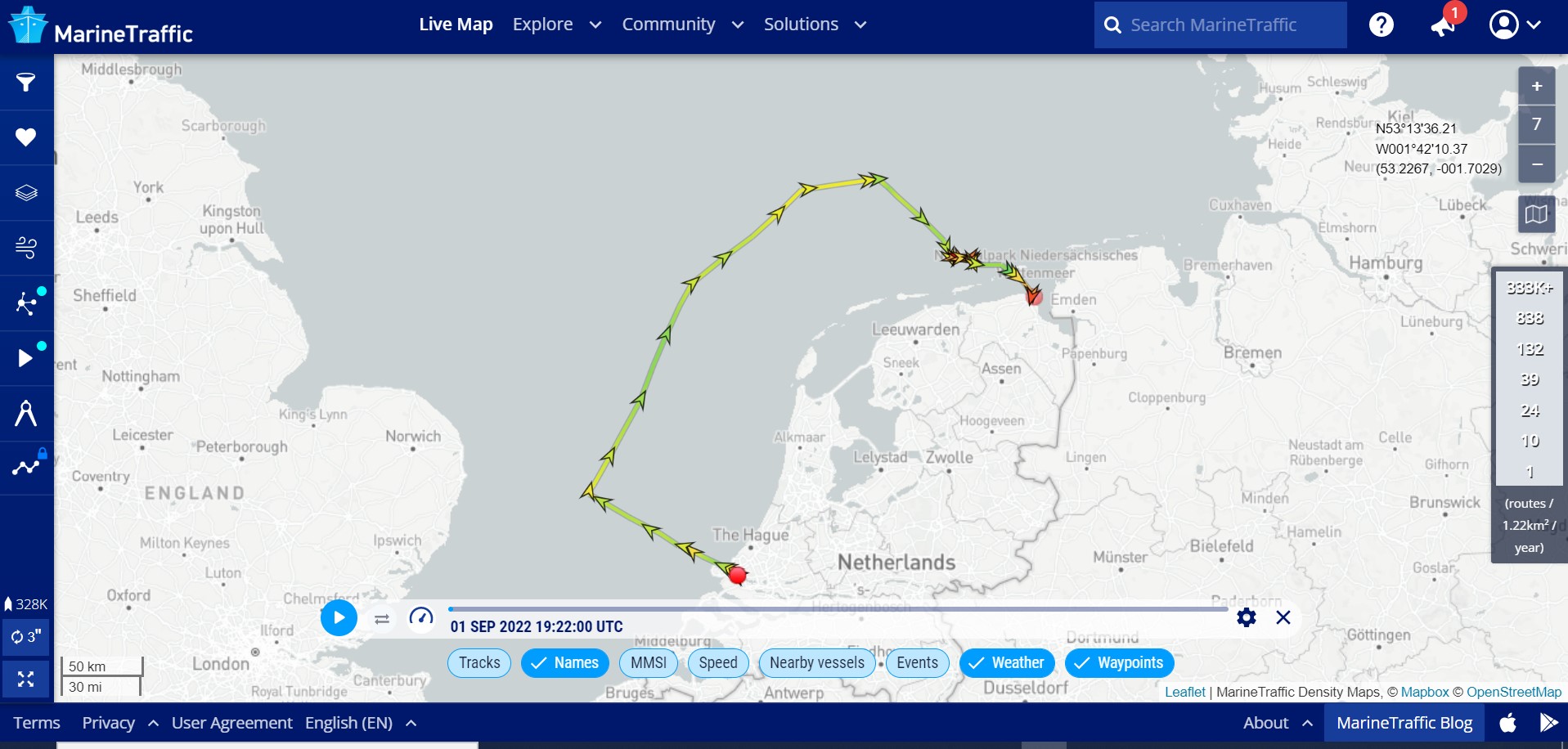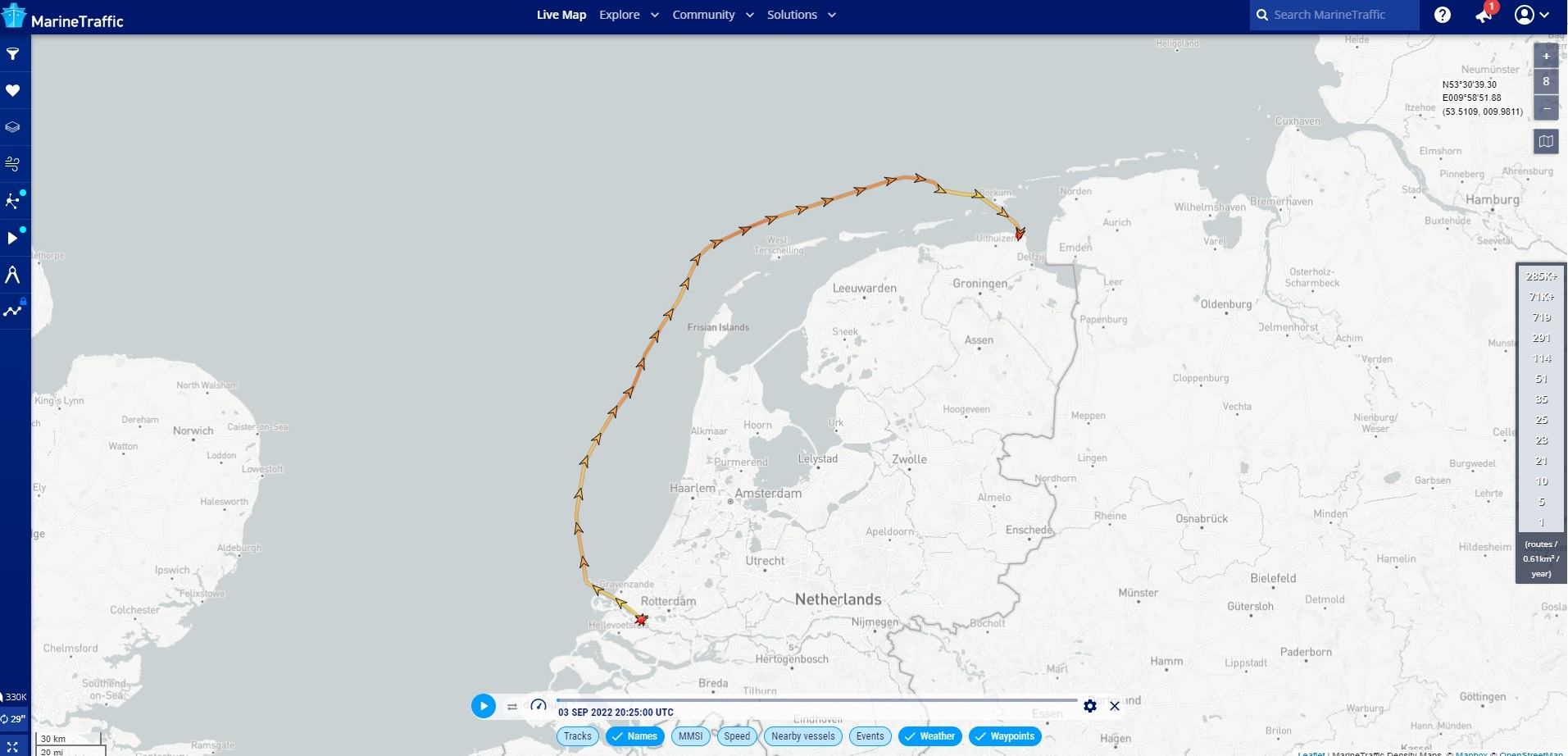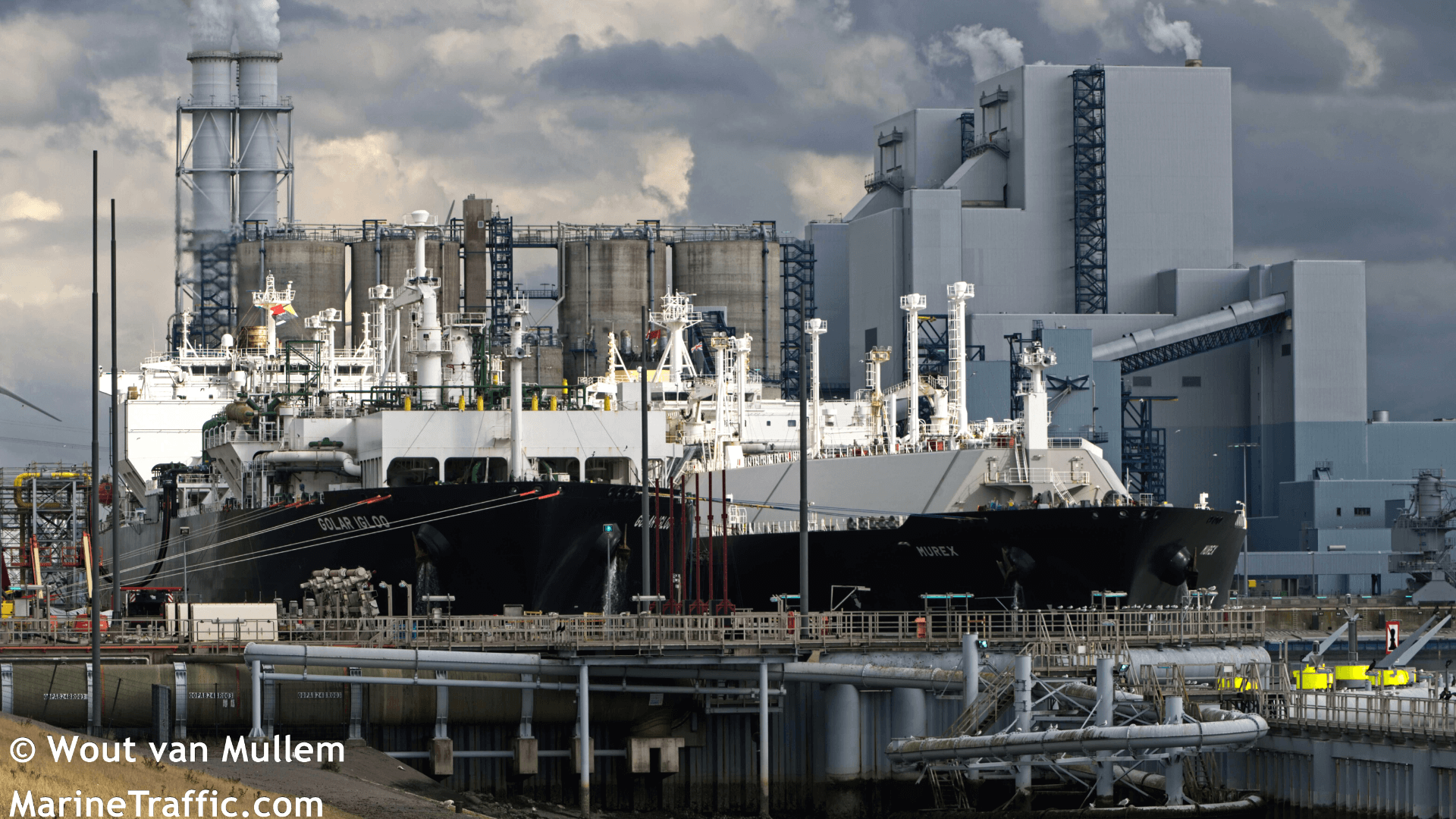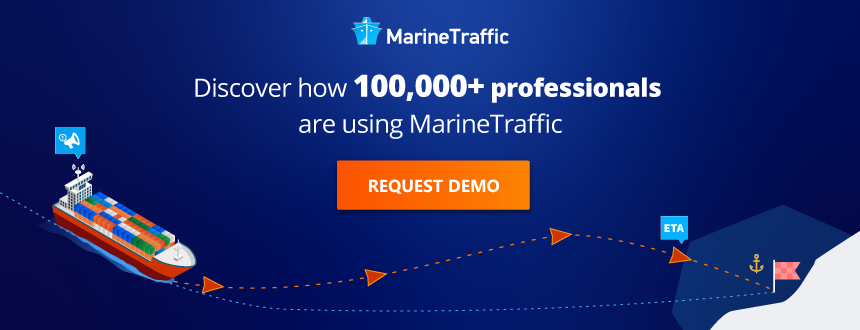Murex (right) alongside Golar Igloo in Eemshaven on 9 September Image: Wout van Mullem / MarineTraffic
Despite efforts to curb our appetite for fossil fuels the demand for LNG is on the rise. Quoting Shell statistics, Reuters wrote in February this year that “LNG demand is expected to almost double to 700 mln tonnes by 2040”.
Europe’s efforts to side-step Russian gas has further inflated demand and prices. And as the European autumn draws in, governments are under pressure to find fuel to keep homes warm and lights on.
To help bridge the gap between the lack of supply and increased demand in the region, the Netherlands has introduced a new regasification terminal at Port of Eemshaven, near Groningen in the north of the country.
Its strategic location on the North Sea offers access to the Atlantic via the English Channel.
Related: Shining the spotlight on shipping’s busiest routes
The new floating terminal is in line with the country’s desire to grow its LNG capacity and will support the Netherlands’ one other LNG terminal, Gate, at Rotterdam.
Construction of EemsEnergy Terminal was officially marked on 8 September, and on the same day the facility handled its first cargo.
In early September two floating storage regasification vessels arrived at the port sailing up from Rotterdam situated further south down the coast. One of the vessels is 2014-built LNG tanker Golar Igloo, which has a 166,809 m3 carrying capacity.
The MarineTraffic Live Map plots the 292.5 metre-long and 43.4 metre-wide vessel as leaving Rotterdam on 1 September and arriving at Eemshaven on 4 September. The ship is presumed to be alongside at the terminal, however, the last AIS position was received on the day of arrival at 18:42 UTC.

Floating storage and production unit Eemshaven LNG (120 metres-long and 33 metres-wide) followed shortly after Golar Igloo. MarineTraffc ship tracking data shows the 19,510 tonnes deadweight vessel leaving Rotterdam on 3 September and arriving on 6 September. The 2017-built vessel’s AIS signal shows that it has remained at the terminal since its arrival.

The two units combined, which are on a five-year lease, will be able to process 8 billion m3 of natural gas a year. LNG will be delivered to the terminal by ship, where Golar Igloo and Eemshaven LNG will turn the liquid fuel back into its gaseous form. The gas will then flow into pipelines managed by Dutch gas energy network operator, Gasunie.
According to Gcaptain: “The capacity at the facility has been booked by Shell, France’s Engie, and CEZ of the Czech Republic.”
Rob Jetten, the Netherlands minister for climate and energy said it’s good news that the terminal has been realised so quickly.
He said in an EemsEnergy Terminal statement: “In addition to saving as much energy as possible and filling the gas storage facilities, the import of liquid gas is indispensable for the security of gas supply in the coming winter. The arrival of the new LNG terminal is an important step not only for the Netherlands, but for the whole of Europe towards reducing its dependence on energy from Russia as quickly as possible.”
The first cargo was delivered on 8 September by the 2017-built Murex. After discharging its cargo the vessel departed the port on 11 September, before heading to the US east coast.
MarineTraffic shows that the 294.9 metre-long and 46.44 metre-wide Murex, with a carrying capacity of 173,400 m3, is currently sitting at anchor off the coast of Savannah.

The first natural gas should have flowed into the Gasunie network around mid-September.
Meanwhile, around 200 km away in Rotterdam – home to Europe’s largest LNG terminal – there are plans to bring more capacity online.
In a 5 September statement Gate terminal, a joint venture of tank storage company Vopak and Gasunie, announced plans to gauge market interest in an additional 4 billion m3 per year of capacity. Gate is already operating at 16 billion m3 (12 billion m3 on a firm basis and 4 billion m3 on an interruptible basis).
With the new 8 billion m3 capacity in Eemshaven, plus the further 4 billion m3 in Rotterdam, the Netherlands will nearly double capacity by 2025.
Pressure on governments to switch to environment-friendly energy sources is unlikely to relax, with commentators arguing that much of the LNG network will be stranded infrastructure by 2050.
It seems that the EemsEnergy Terminal, however, has been planned for the long term. Han Fennema, CEO of Gasunie, said that it could eventually be used to handle green hydrogen – a renewable form of energy. ”In this way, the EemsEnergyTerminal will be able to contribute to the energy supply in the Netherlands and Europe for many years to come,” he said.

